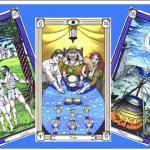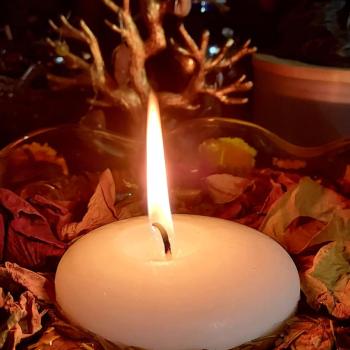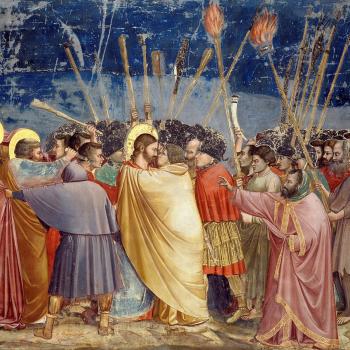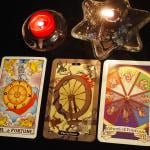
The Planetary Hours and the Traditional Witch’s Compass
There is a time for everything,
and a season for every activity under the heavens:(Ecclesiastes 3:1)
Who uses the Planetary Hours?
The answer, quite simply, is that we all do each and every day. The days of the week are named for the classical planet which rules the first hour as opposed to the traditional sequence of the planets one might expect. Therefore, however you call the 24 hour period which we regard as “today” is named for the planet which rules the first hour after sunrise. Furthermore, this is an ancient system of magic that underscores the very precise science behind the technology of magic which is all too often taken for granted, and permeates the everyday work of our culture since the dawn of civilisation. Indeed, the first astrologers in the ancient cradle of civilisation of Sumer are accredited with being perhaps amongst the earliest to identify the stars in such a finite degree as to calculate the Planetary Hours. Should we reconsider the Planetary Hours and the Traditional Witch’s compass?
We have all heard of them as a part of the grimoire traditions of ceremonial magic, whereby the correct hour using the classical planets is allocated to a particular operation.
The planets were also attributed to the 24 hours of the day as well as to the day itself… The reason why the angels, demons and gods of the day and its hour were so important is revealed in the PGM [Graeco-Egyptian Magical Papyri], but not revealed in the later Greek or Latin grimoires. (Skinner, 2015)
Within the ancient rituals of the goes, the sorcerers and necromantic shaman of early Hellenist culture, through the Alexandrian, Graeco-Egyptian rituals of the early centuries of the Common Era, right up to the renaissance grimoire traditions of necromancy, calculating the rite to coincide with the particular spirits of the month, day and hour were quite important. So much so that the Hellenist astrologers of the first centuries, encountering the Babylonian and Persian systems, attributed the Classical Olympian planetary rulers to the seven day week inherited from the Mesopotamian civilisations. Henceforth, the names of the days of the week were adopted not in the classical order of the planets, as one might expect, but from the painstaking calculating of the planetary hours. Therefore, each day is ruled by the first hour rather than arbitrarily attributed to a planetary governor.
From the earliest times, locating spirits in time and space, and computing the workings of the nature of the cosmos, occupied the philosophies of ancient peoples. With unsurpassed sophistication, these pioneers produced a system which underlies the entirety of the agricultural society that we are the heirs to, with our entire measure of time based upon these observations so long ago. Additional to locating the particular spirit of a precise measured unit of time, it was imperative that the necromancer faced the correct direction. In this way, one could surmise from a description the nature and name of a spirit, locating it in time and space from the briefest and most telling of details.
Again, it is common to see anybody in the occult, magic and pagan communities to begin ritual by addressing the four quarters, often with some nice attributions and correspondences. However, there is an ancient technology at play here which is at the core of our most foundational aspects of civilisation and which influence greatly the outcome of our work. This is a truly complex, sophisticated and profound technology, which informs later mystical traditions such as that found in Ezekiel and Revelations.
Aside from the four quarters, and entire compass rose of spirit correspondences are reckoned by those ancients who dared to explore the mechanism of the magic of the cosmos. The subdivision of the directions culminated in the ‘spirit compass’ of traditional grimoires and Dr Stephen Skinner (Skinner, 2015) asserts that the “…clearest example of such a ‘spirit compass’ is to be found in the first few pages of the Solominic Grimoire Theurgic-Goetia.”

In the grimoire Heptameron, the system calls for the magician’s circle to bear the inscriptions of the timing and seasons in the construction, requiring the magician to construct the circle each and every time.

Returning to our overarching subject of Traditional Craft, we can see already how complex the history and construction of the compass can be. It is necessary when working with the compass to consider the corresponding seasons, timings, months, days and hours, as well as the direction of which the spirits we are working hail from. In this way, it can be seen that the compass is a perpetual motion machine, constantly in flux and reflux. As Robert Cochrane remarked to Joe Wilson, the two words which cannot be spoken of the cauldron, “be still” (Cochrane and Jones, 2002).
In one of his early letters to Joe Wilson, Cochrane asserts that the formula of 1734 can be seen in various ways. The first is the seven in one wisdom, to which he hints that the seven can be seen in the days of the week (Cochrane and Jones, 2002). This rather tantalising suggestion leads us inevitably to a compass of seven and one, but many stop there and simply hail the four guardians of the Castles that stand at the quarters. The story doesn’t end there, though, as we have seen. This technology, of which Cochrane’s system seems well aware, even if he was perhaps not, incorporates some of the ancient workings of spirits of time and space that are to be found in the later grimoires, as well as the PGM.
When working with the compass, we should make ourselves familiar and aware of the spirts or winds which come from not only the direction of the compass, but also the hour of the day. In this way, a more comprehensive understanding of the techniques for utilising the compass emerge. We can begin to see, as Franz Bardon asserts in his Practice of Magical Evocation, that the circle here becomes the microcosm and macrocosm in a state of equilibrium, chaos and creation simultaneously as a dialectic of thesis, antithesis and synthesis. Once these three planes are established and maintained, and the location of the nail which fixes the moment, pointing always and ever to ‘Now‘, we may activate the machine of the compass rose.
For the Planetary Hours, we recommend the Renaissance Astrology website of Christopher Warnock.
 Bibliography
Bibliography
Cochrane, R. and Jones, E. J. (2002) The Robert Cochrane Letters: An Insight into Modern Traditional Witchcraft. 1st edn. Edited by M. Howard. Capall Bann Publishing.
Skinner, S (2015) Techniques of Solomonic Magic, 1st edn. Golden Hoard.

















